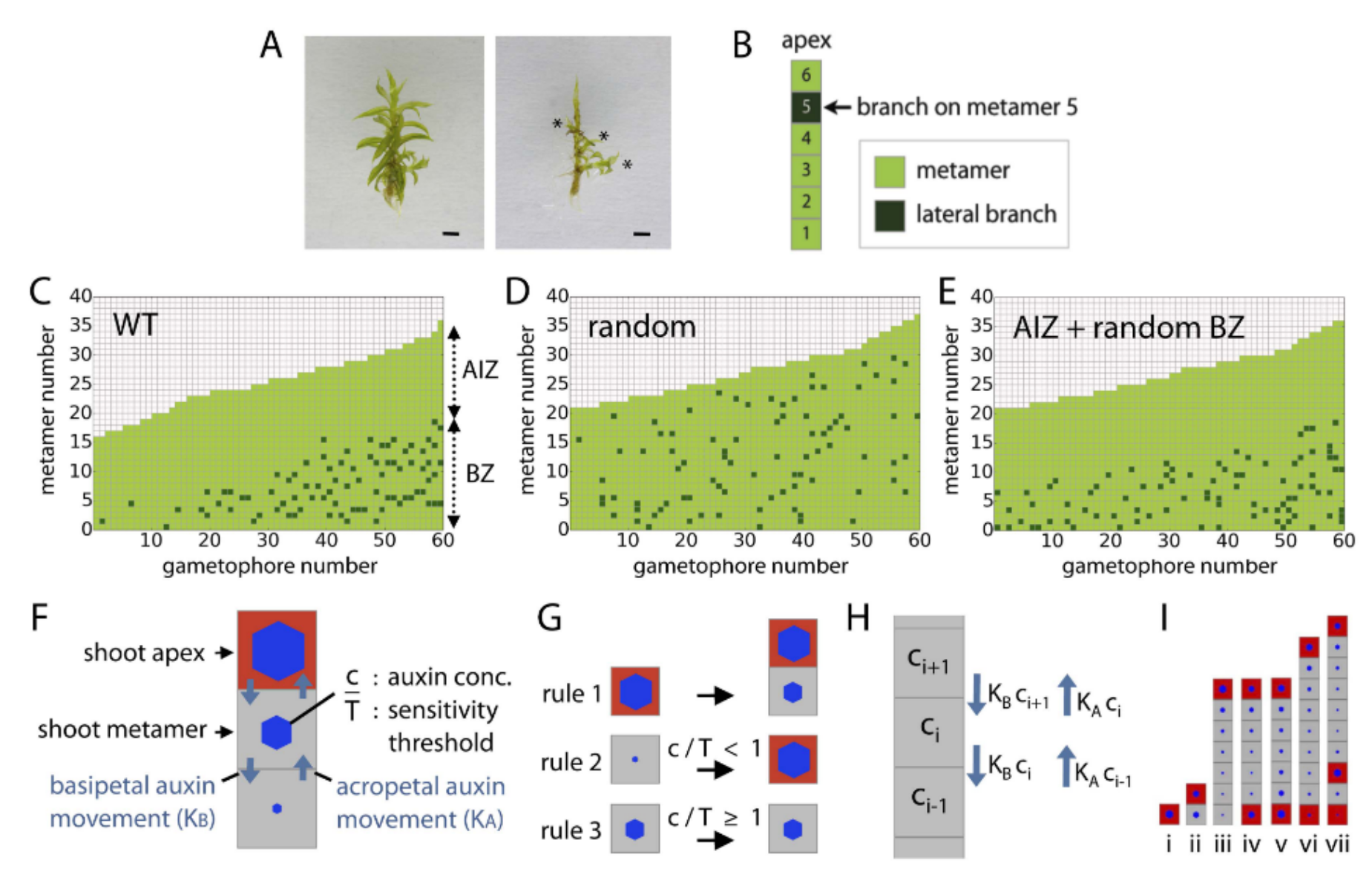Three ancient hormonal cues co-ordinate shoot branching in a moss
Elife, 2015 Mar 25:4:e06808
Abstract
Shoot branching is a primary contributor to plant architecture, evolving independently in flowering plant sporophytes and moss gametophytes. Mechanistic understanding of branching is largely limited to flowering plants such as Arabidopsis, which have a recent evolutionary origin. We show that in gametophytic shoots of Physcomitrella, lateral branches arise by re-specification of epidermal cells into branch initials. A simple model co-ordinating the activity of leafy shoot tips can account for branching patterns, and three known and ancient hormonal regulators of sporophytic branching interact to generate the branching pattern- auxin, cytokinin and strigolactone. The mode of auxin transport required in branch patterning is a key divergence point from known sporophytic pathways. Although PIN-mediated basipetal auxin transport regulates branching patterns in flowering plants, this is not so in Physcomitrella, where bi-directional transport is required to generate realistic branching patterns. Experiments with callose synthesis inhibitors suggest plasmodesmal connectivity as a potential mechanism for transport.
Paper

|
Paper |
BibTeX
@article{Coudert:2015:HormonalCues,
author = {Yoan Coudert and Wojtek Palubicki and Karin Ljung and Ondrej Novak and Ottoline Leyser and C Jill Harrison},
title = {Three ancient hormonal cues co-ordinate shoot branching in a moss},
journal = {Elife},
year = {2015},
volume = {4},
pages = {e06808},
doi = {10.7554/eLife.06808}
}
